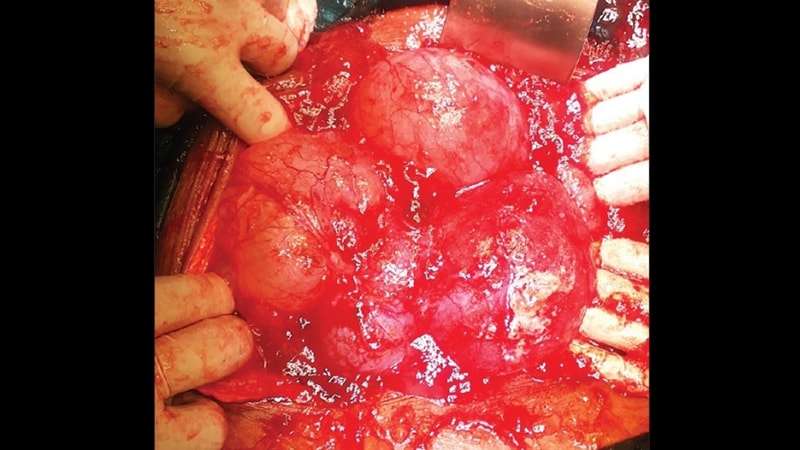New Findings on Rare Mucinous Ovarian Cancer May Change Tx
The largest study to date of mucinous ovarian cancer (MOC) offers hope for a more personalized treatment approach in patients diagnosed early with this rare form of the disease.
MOC accounts for only about 3% of cases, and differs from the more common, high-grade serous form of epithelial ovarian cancer in that it is usually symptomatic with large tumors. This leads to early diagnosis, often in women under 40 years old.
The new study involved more than 100 researchers from across the globe working together to analyze microscopic patterns of cell growth in 604 tissue samples from patients with stage I MOC, the largest such series to date.
The findings were published online Oct. 12, 2022, in Clinical Cancer Research, a journal of the American Association for Cancer Research.
The results show that an infiltrative pattern of invasion, as opposed to an expansile pattern, was associated with decreased overall survival (OS) within 2 years after diagnosis (hazard ratio, 2.77).
“We’ve shown for the first time that women who have early stage disease — meaning they have tumors that haven’t spread beyond the ovary — have much poorer survival chances in the first 2 years from diagnosis if they have what we call an infiltrative pattern of invasion,” explained first author Nicola S. Meagher, a research fellow and PhD candidate at the University of New South Wales Sydney (UNSW), Sydney, Australia, said in a press release.
“Knowing this in the early stage of the disease means we can identify patients who could benefit from additional chemotherapy following surgery to remove their ovaries,” she added.
The team also looked at 19 candidate genes and found that high expression of thrombospondin 2 (THBS2) and transgelin (TAGLN) in MOC tumors are markers for poor prognosis.
The latter finding may eventually help explain “some of the biology” of the disease and assist in developing targeted drugs, Meagher commented.
Need to Align Treatment Guidelines
The researchers hope that the results of this study will lead to changes in treatment guidelines.
At present, guidelines on how to treat women with early stage MOC differ around the world due to limited data, explained principal investigator Susan Ramus, PhD, a professor at UNSW and head of the Ovarian Tumor Tissue Analysis consortium.
“For example, in some parts of the world, an infiltrative pattern was acknowledged as an important feature and determined what treatment those women receive,” Ramus explained in the press release. “Whereas in others, all patients are recommended for the same pathway of treatment.
“We hope that after this large study treatment guidelines can be aligned and that we can target treatment for women who may have these more serious indicators, even if they are diagnosed in early stages.”
The investigators are planning a validation study to “further investigate these genomic markers as the basis for a targeted treatment strategy,” she noted.
Meagher and Ramus reported no conflicts of interest. Meagher noted that she has received a travel grant from NanoString Technologies unrelated to this work.
Clinical Cancer Research. Published online Oct. 12, 2022. Abstract.
Sharon Worcester, MA, is an award-winning medical journalist based in Birmingham, Alabama, writing for Medscape, MDedge, and other affiliate sites. She currently covers oncology, but she has also written on a variety of other medical specialties and healthcare topics. She can be reached at [email protected] or on Twitter: @SW_MedReporter.
For more news, follow Medscape on Facebook, Twitter, Instagram, and YouTube.
Source: Read Full Article
